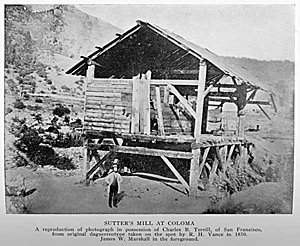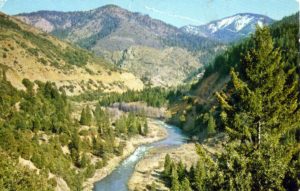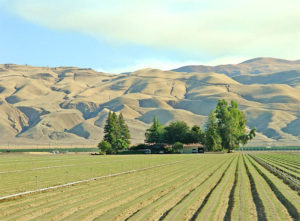This is the first of two posts about the setting for our game. It’s mostly just me mining from California history and geography to give this project a bit of context. And anyone who knows me is aware that I can talk about history until I’ve bored everyone in the room except myself, so I’ll try to keep this brief and to the point, but I apologize in advance if it’s more than you care to know.
 The working title of the game comes from the year 1849. In 1848, gold was discovered at Sutter’s Mill in California. But since it took so long for the news to reach the rest of the world and for gold seekers to make their way to California in the mid-nineteenth century, the “rush” began in earnest the following year in 1849 and the people who came for the gold rush are often called “49ers” in reference to that year. Historians estimate that 90,000 people came to California in 1849 alone. By 1855 when the rush started to fade, 300,000 people had come to California.
The working title of the game comes from the year 1849. In 1848, gold was discovered at Sutter’s Mill in California. But since it took so long for the news to reach the rest of the world and for gold seekers to make their way to California in the mid-nineteenth century, the “rush” began in earnest the following year in 1849 and the people who came for the gold rush are often called “49ers” in reference to that year. Historians estimate that 90,000 people came to California in 1849 alone. By 1855 when the rush started to fade, 300,000 people had come to California.
Three more little facts that I want to throw in and then I’ll stop babbling about California’s history…
- Um, isn’t this Mexico? In 1848 when some Americans found gold while working at a sawmill called Sutter’s Mill, they were technically living in Alta California, a state in Mexico. And they were probably there illegally. California became a state in 1850, after gold was discovered. It was essentially stolen from Mexico and very quickly made a state. When Alaskans decided to become a state in 1946, it took 13 years for that to happen. In Hawai’i, it took five years. California went from part of Mexico to a fully-fledged state in about seventeen months in an era before the telegraph and transcontinental railroads connected it to the rest of the country.
- Growth, fire and plague. I’m taking the city of San Francisco as an example because we live here… Between January 1848 and December 1849, the population of San Francisco increased from 1,000 to 25,000. Between December 1849 and June of 1851, there were six “great fires” that destroyed between 25% and 50% of the city each time. There were numerous outbreaks of disease. The first permanent hospital in San Francisco did not open until 1857.
- Where are the women? The Gold Rush was very much a male-dominated affair. The railroad did not connect California to the rest of the US until 1869. Most people came either by boat around the bottom of South America or to Central America to switch boats or they came overland by river, wagon and on foot. Both methods took months. Many people came merely to “seek their fortunes” and never intended to stay. And they were almost all men. That led some very, very odd sex ratios. After California became a state, it had to take a census, which it did in 1852. In 1852, there were 180,000 men in California and only 20,000 women. By 1860 when the next census was taken, there were 273,000 men and 107,000 women in the state. The impact of the difference between men and women who came during the Gold Rush was so strong that the sex ratios in California did not even out until 1950, over a century later.
And now just a touch of geography…

The Feather River in the Sierra Nevada (above) was a significant source of gold during the Gold Rush.
Most of the gold mining in the Gold Rush was done in the Sierra Nevada Mountains and their foothills and in the rivers and mountain streams that come down from them. The Sierra Nevada are forested and get considerable snowfall during the winter months. Most of the trees are evergreens and pine trees.

The Central Valley near Modesto, CA.
However, most of the food and other resources that supplied the miners in the mountains came from towns and farms located in the Central Valley of California, a largely flat plain that lies between the Sierra Nevada and the Pacific Ocean. The Central Valley is semi-arid land watered by the large rivers that come off of the mountains. It has lots of green farms and orchards watered by irrigation from those rivers and lots of brown ranch land for livestock on hills dotted with a few trees.



